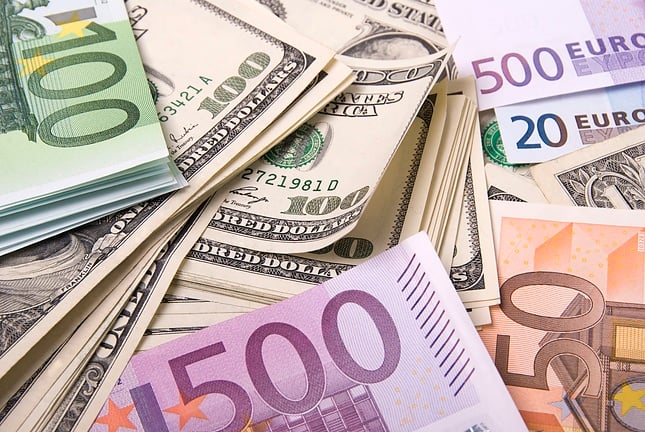The cost of owning a vehicle, like the cost of owning practically anything in America, has risen considerably over the past several years. Along with an inflated money supply, higher-for-longer interest rates, and supply-chain constraints come a host of unfortunate consequences, not the least of which is a hefty financial burden for new car owners.
While used vehicle prices are historically elevated, new vehicles are truly unaffordable for middle-class Americans. Kelley Blue Book data indicates that the average transaction price for a new car in August was $48,451. However, the actual sum paid will often be higher than that after interest payments have been factored in.
I actually know people who spend upwards of $1,000 per month on car payments, which blows my mind. At the same time, when markets are skewed, oftentimes there are opportunities ripe for the picking. So, let’s take a closer look at a frequently ignored auto-market sector that, I believe, is poised for outsized returns.
Auto-Parts stocks: The logic behind the wager
Suffice it to say, the negotiations between the United Auto Workers (UAW) union and the Detroit-based Big Three automakers – Ford (NYSE: F), General Motors (NYSE: GM), and Stellantis (NYSE: STLA) – aren’t going well. As the back-and-forth talks enter into their third week without any definitive resolutions, Ford CEO Jim Farley reportedly accused the UAW of “holding the deal hostage over battery plants,” followed by UAW President Shawn Fain countering, “I don’t know why Jim Farley is lying about the state of negotiations.”
Clearly, all of this is taking a big toll on the Big Three. According to Reuters, General Motors and Ford said they’re “indefinitely laying off another 500 workers at four Midwestern plants” as a result of the ongoing strikes (330 workers for Ford and 164 workers for General Motors, to be more precise). No matter how you slice it, there are fewer workers available to build cars and the most probable outcome will be significant pay raises for the workers that remain.
That, in turn, should lead to higher new car prices at some point. It’s not an outcome that I’m happy to predict, but it’s hard to imagine any other ending to this unfortunate story. Another result, I expect, will be that many consumers will hold on to their current vehicles longer since they won’t easily be able to afford new ones. This, then, will benefit sellers of automotive components – and, I would suggest, this potential tailwind hasn’t been fully priced into auto-parts stocks yet.
Bet on the parts, not on the cars themselves
Some financial traders might be tempted to bet on Ford, General Motors, and/or Stellantis stock now. After all, in the event of a final resolution between the Big Three automakers and the UAW, there ought to be a huge relief rally – right?
Not necessarily. I recommend waiting until the terms of the final agreements are released before jumping into a trade with automaker stocks. Even if you and I think that the terms are favorable to the Big Three, it’s difficult to predict how the market will react.
Do you know which under-the-radar stocks the top hedge funds and institutional investors are investing in right now? Click here to find out.
Moreover, the financial fallout of the current negotiations will undoubtedly be reflected in the Big Three’s future earnings reports. Really, the full scope of the damage won’t be assessed until 2024. Thus, waiting for more data is the most prudent policy for the time being.
Try the “big three” Auto-Parts stocks
Just as there are the Big Three automakers, there are three major publicly listed U.S.-based auto-parts sellers. All three of them have market caps in the billions and reasonable price-to-earnings (P/E) ratios.
The biggest of the three is O’Reilly Automotive (NASDAQ: ORLY), with a $54 billion market cap and a trailing 12-month P/E ratio of around 25. Next is AutoZone (NYSE: AZO), which trades at 19 times earnings and has a sizable $45 billion market cap. Coming up the rear is Advance Auto Parts (NYSE: AAP), which sports an enticing P/E ratio of around 9 and a smaller but still appreciable market cap of roughly $3 billion.
For bottom fishers and income-focused investors, Advance Auto Parts stock would be the obvious choice since it’s been drastically sold off and because the company pays a forward annual dividend yield of 1.79%. For a less risky bet, however, investors might consider O’Reilly Automotive stock and/or AutoZone stock. Either way, these auto-parts stocks could be the ultimate winners regardless of how the union-automakers battle plays out.
VALUEWALK LLC is not a registered or licensed investment advisor in any jurisdiction. Nothing on this website or related properties should be considered personalized investments advice. Any investments recommended here in should be made only after consulting with your personal investment advisor and only after performing your own research and due diligence, including reviewing the prospectus or financial statements of the issuer of any security. VALUEWALK LLC, its managers, its employees, affiliates and assigns (collectively “The Company”) do not make any guarantee or warranty about the advice provided on this website or what is otherwise advertised above. The Company is not registered or licensed by any governing body in any jurisdiction to give investing advice or provide investment recommendation. The Company disclaims any liability in the event any information, commentary, analysis, opinions, advice and/or recommendations provided herein prove to be inaccurate, incomplete or unreliable, or result in any investment or other losses.
Recommended content
Editors’ Picks

EUR/USD stays weak below 1.0500 due to risk-off mood
EUR/USD remains depressed below 1.0500 in Tuesday's European morning as US President-elect Trump’s tariff plans dampen the market sentiment and keep the US Dollar broadly bid. The Euro struggles due to growing Euro area economic concerns and increased dovish ECB bets.

GBP/USD consolidates losses near 1.2550 ahead of BoE's Pill, Fed Minutes
GBP/USD struggles near 1.2550 in European trading on Tuesday, following a slump to the 1.2500 area. The US Dollar holds on to modest gains amid Trump's tariffs threat-driven cautious mood, keeping the pair undermined ahead of BoE Pill's speech and Fed Minutes.

Gold price seems vulnerable amid bullish USD; $2,600 mark holds the key
Gold price struggles to capitalize on its modest intraday bounce from the $2,600 neighborhood, or over a one-week low and retains a negative bias for the second straight day on Tuesday. Trump's tariff threat drove some haven flows and offered some support to the safe-haven precious metal.

Trump shakes up markets again with “day one” tariff threats against CA, MX, CN
Pres-elect Trump reprised the ability from his first term to change the course of markets with a single post – this time from his Truth Social network; Threatening 25% tariffs "on Day One" against Mexico and Canada, and an additional 10% against China.

Eurozone PMI sounds the alarm about growth once more
The composite PMI dropped from 50 to 48.1, once more stressing growth concerns for the eurozone. Hard data has actually come in better than expected recently – so ahead of the December meeting, the ECB has to figure out whether this is the PMI crying wolf or whether it should take this signal seriously. We think it’s the latter.

Best Forex Brokers with Low Spreads
VERIFIED Low spreads are crucial for reducing trading costs. Explore top Forex brokers offering competitive spreads and high leverage. Compare options for EUR/USD, GBP/USD, USD/JPY, and Gold.